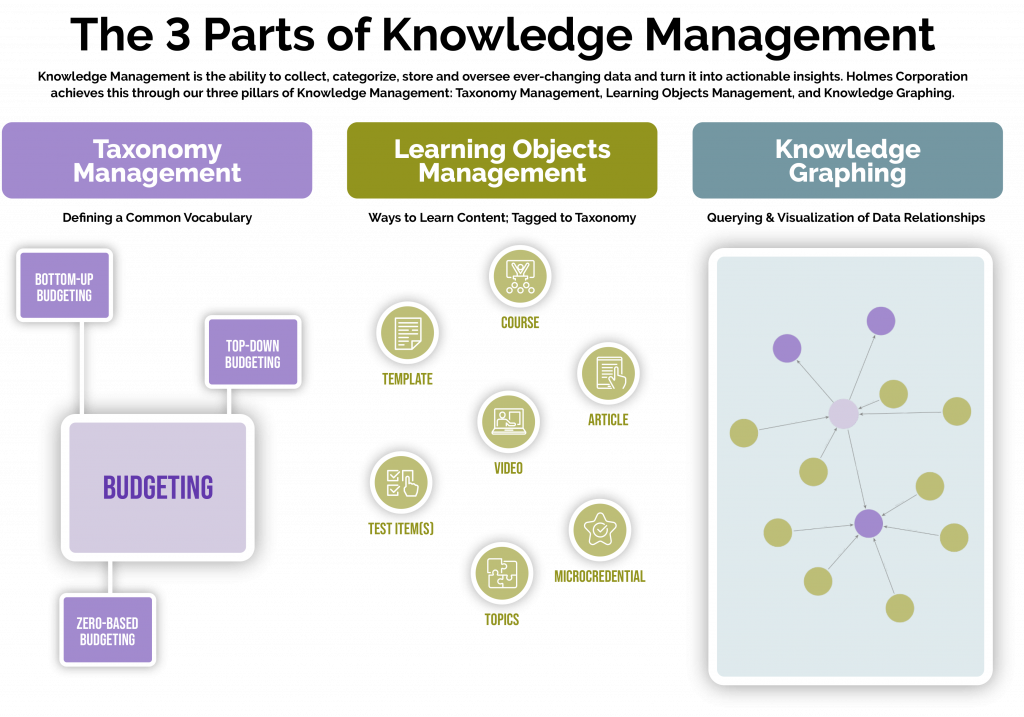In the previous articles in this series, we discussed the different components of Knowledge Management (and if you didn’t read them yet, go take a look!).
We’ve covered:
- Taxonomy Management and how concepts and ontology can help us connect disparate entities
- Learning Object Management and how we create our content universe to explore for insights
- Knowledge graphing and how graph databases can connect our data in a visual way
Here’s a handy chart to help you visualize the three parts of knowledge management.

With these elements in place, we can leverage the benefits of our scalable Knowledge Management System. How could a knowledge management system benefit your association?
Benefit 1: Smarter Search and Chat Bots
Having your association’s body of knowledge and related entities in one place allows for improved search capability.
Pairing metadata generated by large language models (LLMs) with the semantic relationships aggregated in a knowledge graph, we can drastically improve search across a content base, moving beyond literal word matches towards practical, common-sense meanings.
Additionally, a Knowledge Management system can fuel real-time applications like chat bots, learner dashboards, and more. It starts with having your data all together and in the right format.
Benefit 2: Higher Quality Data
In an AI-driven landscape, new technologies have the capacity to dramatically change our lives. AI is shaping not only how we do business but how we go about our day, and that impact is only going to grow.
At the same time, LLMs and other types of machine learning models require quality data to help us make informed decisions. There is a significant possibility that these models can and will train on poor-quality or biased data. Considering that, a Knowledge Management system using vetted taxonomies and learning objects can serve as a higher quality data source for your association’s needs.
Benefit 3: Optimized Learning Outcomes
With knowledge management in place, learning systems using models trained on your data can guide learners along the right path. Understanding learner interactions with learning objects and their performance can help us help them achieve their learning needs. And with a robust and continually updated knowledge system in place, learners can come back time and time again to receive guidance on the next steps in their career.
So what’s next?
It’s time to come up with your Knowledge Management plan! Below are a few recommended steps to take before plunging into Knowledge Management:
- Understand the goals of your Knowledge Management system. What are the measurable outcomes you want to achieve with your system in place?
- Identify stakeholders to participate. Key players from different departments in your organization will not only give you great feedback but will also envision use cases that will enrich your Knowledge Management system in the long run.
- Scope out the breadth of the domains you want to cover. Perhaps you want to start with a particular knowledge domain before expanding. That’s okay! Consider how to set up flexible taxonomies that can incorporate new concepts and the types of learning objects you want to tackle first.
- Build incrementally, test, and scale. When trying new technologies, there will always be a learning curve. Have a methodical and consistent plan for building out your system, but don’t feel pressured to build out every component all at once. If you’re honest about the difficulty and incorporate feedback early, you can incrementally build the system that meets your
And, of course, reach out to HC at [email protected]. We understand the power of Knowledge Management and are always happy to discuss your future Knowledge Management system!







